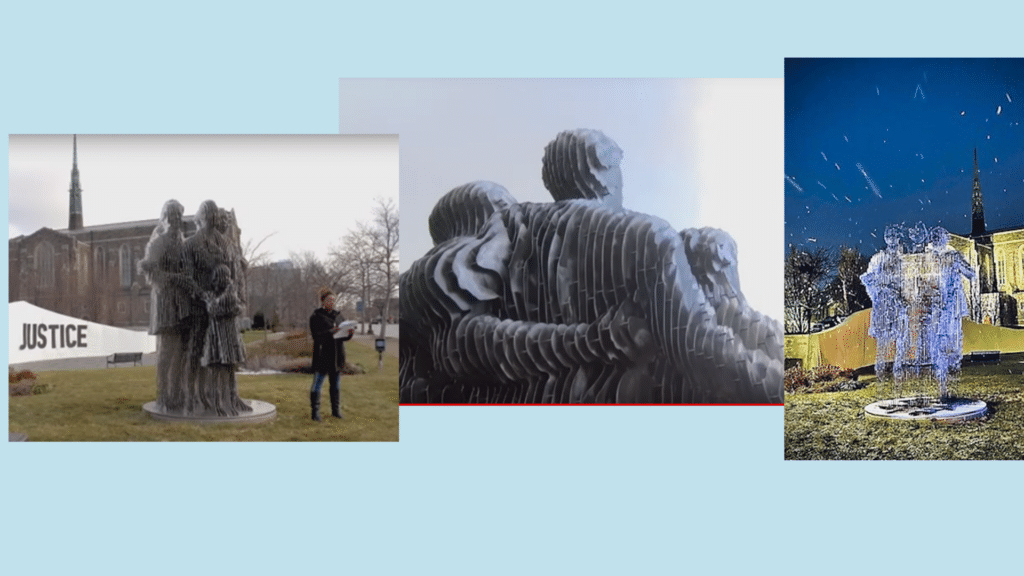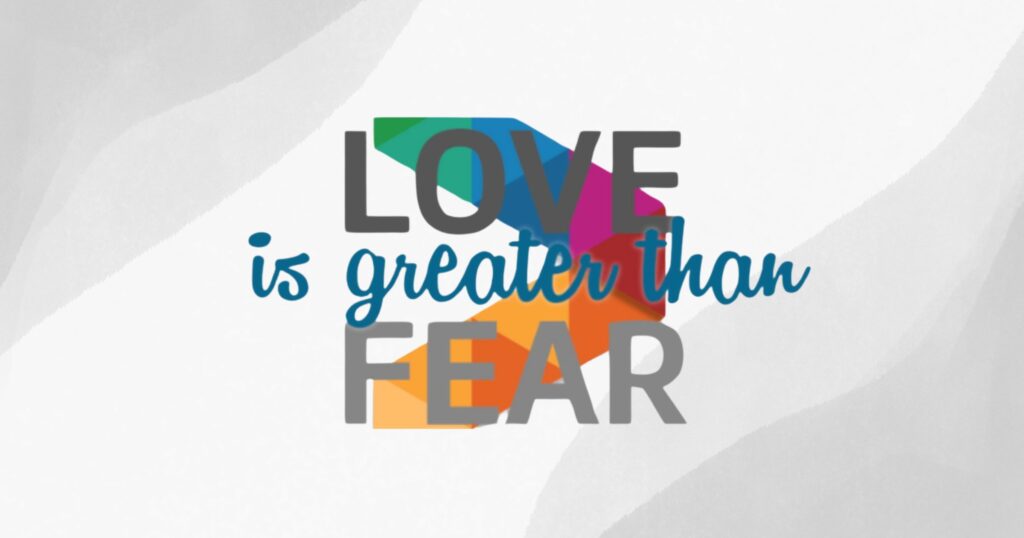King’s words inspire salute in steel to solidarity, social justice
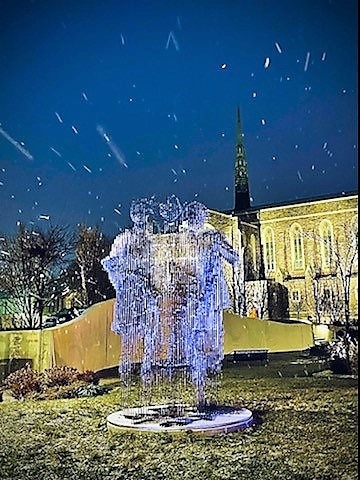
Looked at from one angle, the three-ton sculpture almost disappears.
From another, it is solid: people standing close together. They are calm freedom fighters. Their bond is as strong as steel.
“Social justice” is in the very name of the park where the new statue stands, on the grounds of First Congregational Church, United Church of Christ, in downtown Columbus, Ohio. And the sculpture’s name borrows words from the Rev. Martin Luther King Jr.: “Our Single Garment of Destiny.”
Unveiled Jan. 18, on the U.S. holiday honoring King, the sculpture is the latest feature of Washington Gladden Social Justice Park. Designated by the church as public space, the park has been evolving since its dedication in 2018.
‘The bodies merge’
In an online dedication ceremony, the sculptors, a couple, described their work. They named it from these words from King’s 1963 “Letter from Birmingham City Jail”:
“Injustice anywhere is a threat to justice everywhere. We are caught in an inescapable network of mutuality, tied in a single garment of destiny. Whatever affects one directly affects all indirectly.”
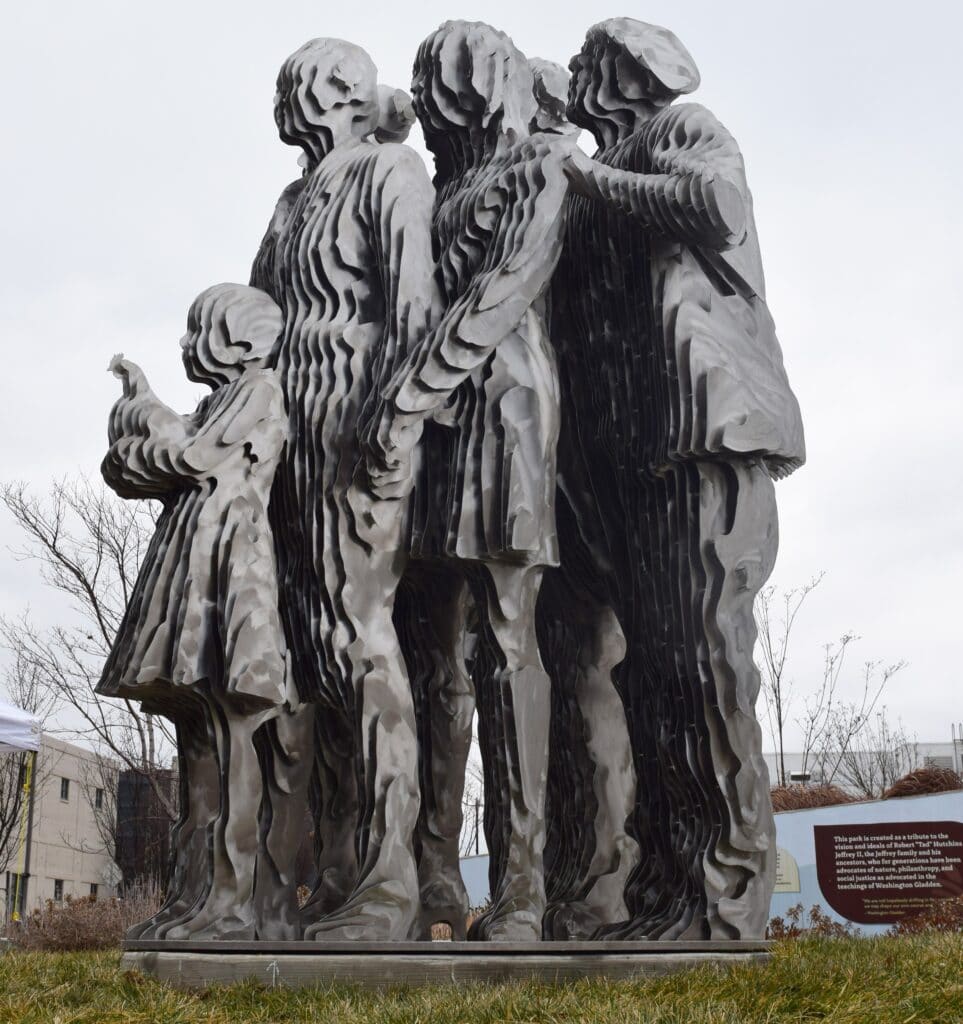
Julian Voss-Andreae, a scientist as well as an artist, said quantum physics inspired the sculpture’s steel slices. Real activists were its subjects. “It’s a diverse group from Portland, Ore., our hometown, who were able to organize the larger community to ultimately win a David-versus-Goliath fight for social, racial and climate justice,” he said. Their cause, said Adriana Voss-Andreae, was the Portland Clean Energy Fund, “the nation’s first-ever successful climate justice initiative created and led by communities of color in 2018 that now serves as a national model.”
“The sculpture portrays the individual people becoming a coherent whole,” Julian said. “The bodies merge, starting to lose the outlines of their individual boundaries.”
‘Shift our perspective’
“When we start seeing ourselves less as separate individuals and more as one great wholeness, we begin to understand that the difference between myself and my neighbor is ultimately an artificial divide,” Adriana said.
The sculpture’s morphing appearance makes a point.
“The multiple, interrelated crises we’re facing – a pandemic, racist violence and militarism, unprecedented economic inequalities, ecological collapse, and the climate crisis – all these are showing us that we’re interconnected,” she said. “Only if we’re able to collectively shift our perspective, and, with it, our actions, can we turn the tide for us and many generations to come.”
The social gospel
Those sentiments are a good fit for First Congregational, founded by white abolitionists in 1852, said its senior minister, the Rev. Tim Ahrens. “This is the house that justice built,” he said. “We have been led through the years by people who are committed to the work of social justice,” including Gladden, a highly regarded civic leader and “social gospel preacher.”
The church doesn’t just own the park land. It is deeply involved in its evolution and operation:
- The church created a fund for the park at the Columbus Foundation. The fund’s trustees include church members and others from the community.
- The park’s governing board has majority of church members, but also others from the community. It is appointed by the church council.
- A donation from a church family made the park possible.
- A First Congregational member, Tom Worley, is the park’s volunteer director.
- Mark Dahnke, the church’s building and grounds superintendent, is park superintendent.
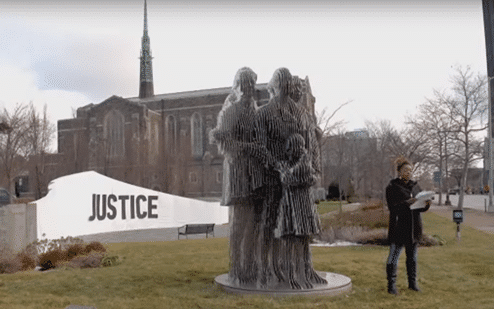
But as the sculpture dedication ceremony made clear, the whole Columbus community has embraced the park — and, now, its art.
“Art has always played a significant role in the fight for social justice,” said city Councilwoman Priscilla Tyson. “In this recent, unprecedented time of unrest, this artwork is showcasing to the nation that we are advocates in the fight for social justice, racial justice, civil rights and voting rights.”
‘Mama, it just disappeared’
Ahrens said he was moved by an interpretation he heard from visitors just after the statue’s dedication. They were an African American woman and her son of 4 or 5 years old.
“As they walked around the sculpture, he said, ‘Mama, it just disappeared.’ And he kept walking, and said, ‘It just came back. What does that mean?’
“She said, ‘It’s the story of our lives. Sometimes we disappear before their eyes.’ She may have been saying that as a Black woman. She may have been saying it as a mom.”
He thought of her insight when he returned to see the sculpture that night. “There were three homeless people sleeping around our church. We know them and we try to make sure they have food. But they’re invisible to people. It’s the solidity of the human family and the fragility of the human family; our ability to stay together and the way in which we fall apart and disappear from each other.”
Related News
A Prophetic Call for Justice and Peace in Palestine
The executive leaders of the United Church of Christ have issued the following statement...
Read More‘Love is Greater Than Fear’: Regional Youth Events get to the heart of gospel message
United Church of Christ teens attending this summer’s Regional Youth Events (RYE) are...
Read MoreUCC desk calendars available to order now
Prepare for your day, month and year with the United Church of Christ desk calendar —...
Read More